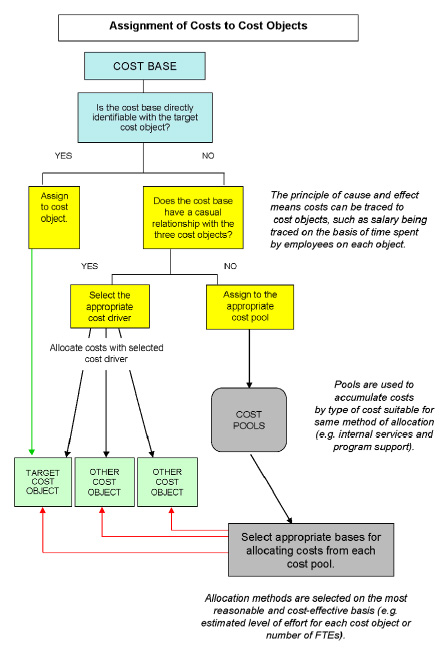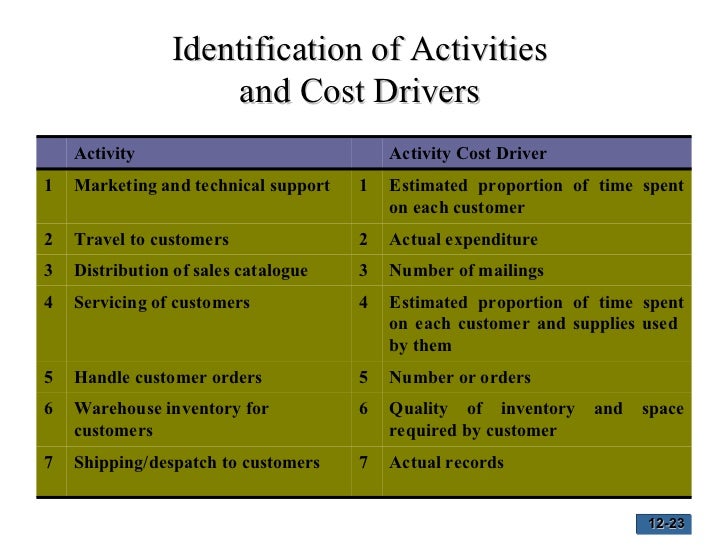Cost Drivers Examples In Service Industry

A concern, which I come across in almost every financial modeling exercise leading to valuation, is how to estimate the revenue drivers of the company I am modeling for. This question is also raised every time I assign a company to my team of analysts and associates for modeling. In every classroom, I encounter similar concerns without fail. Industrialists and business owners emphasize that one needs to be an industry / business expert to identify the revenue drivers and then model them.
Sep 28, 2016 - In this lesson, we will learn about cost drivers. We will define the term, look at examples, and learn the steps a company might take when.
Wilcom, a leader the Embroidery industry with ongoing innovations that push the boundaries of creativity in personalized expressions and apparel decoration, presented the release of Embroidery Studio E2 – professional embroidery software for digitizing, bling, print, sequins and more. Version 6.64 SafeNet Inc. HASP (Dongle) driver for Wilcom EmbroideryStudio e3, e2 and Wilcom DecoStudio e3, e2 (Windows 8.1, 8, 7, Vista SP2, Windows XP SP3). Best for most users because this has a Graphical User Interface (GUI). Wilcom embroidery studio e2 with crack. Household sharing included. Live TV from 60+ channels. No cable box required. Cancel anytime.
 Advantech Products List2 968TWES7PO Windows Emb Standard 7 P 7WT-00050 PCM- 96CP-IO-ST1600 STRETCH ALARM BOARD(G) 96DVD-18X-I-AS-AV1 ADVANTECH 18X IDE DVD-ROM OEM(G) 96FD25-2G-CT-AP 2G IDE SSD 2.5' SLC COM TEMP(G) FPM-5151G-X0AE 15' XGA Ind.
Advantech Products List2 968TWES7PO Windows Emb Standard 7 P 7WT-00050 PCM- 96CP-IO-ST1600 STRETCH ALARM BOARD(G) 96DVD-18X-I-AS-AV1 ADVANTECH 18X IDE DVD-ROM OEM(G) 96FD25-2G-CT-AP 2G IDE SSD 2.5' SLC COM TEMP(G) FPM-5151G-X0AE 15' XGA Ind.
I agree to such an opinion but only partly. I vouch that one acquires the art of identification of appropriate revenue drivers by experience, but I am a very strong believer of the fact that most of it is common sense, once you broadly understand what a company does to earn revenue. For all the discussions in this article, let’s assume that we are undertaking a financial modeling exercise leading to valuation. The first line item that needs to be projected is “Revenue”. Now ponder over the questions below: • Should “Revenue Build Up” be given a rigorous treatment? • Is “Revenue” a line item that needs special attention and rigor?
• Why spend so much time on building up the revenue in a model hen it’s like any other line item in the entire exercise? “Revenue Build Up” exercise in a financial model should be rigorous and deserves utmost attention because: • Revenue Build Up typically will be the first piece to be modeled. This is the first module that your client, top management, seniors, reviewers, investors, lenders etc will go through before they move to the next section of your model. Rigorously projected revenue speaks a lot about the analytical skills, thought process, business understanding and industry understanding of a modeler. It gives the flavor of the rigor that rest of the model is expected to have. • Revenue, per se, is an extremely important line item in modeling. Many analysts, in the absence of relevant and required information about the cost drivers, typically use revenue line item to project the cost line items (costs expressed as a%age of sales / revenue / turnover).
A rigor in revenue build up also ensures a rigor in costs projections. • In the absence of information about the capital expenditure plans and depreciation policy of the company, an analyst may again choose “Revenue” to project capital expenditure and depreciation in future years. And it’s not hidden how important capital expenditure as a line item is in the entire exercise of financial modeling leading to valuation. Now that we understand the importance of revenue build up in a financial model, let’s proceed to identify revenue drivers. How should we identify the revenue drivers?

Simplest way to identify revenue drivers is to think what are the variables when mathematically operated might give you the revenue. Let’s look at few examples below: Airlines Industry Revenue should have following components: • Revenue from Passenger Movement • Revenue Cargo Movement • Others – Foods & Beverages sold inside the flight (in case of lo cost carriers), any promotional schemes advertised inside the flight during journey etc. Let’s break it down further. Revenue from Passenger Movement We understand from our own experience that airlines seats belong to different classes and are priced differently on different days. They start cheap but become expensive closer to the date of journey. This implies slab wise airfare modeling. Hence, the drivers will be: • Total number of seats • Split between different classes (Business, Economy etc) • Utilization / Occupancy • Split between different airfare slabs • Airfare in each slabs: Requires growth rates in airfare Let’s say a carrier has 180 seats out of which 60 seats are for Business Class and balance in Economy Class.